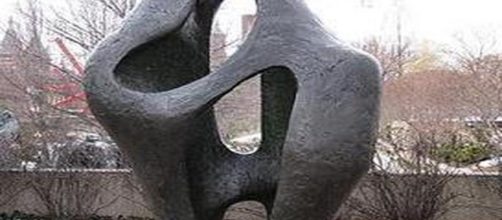News out of the Tate museum in London is infuriating. A newly discovered diary of a past director shows that in 1945 sculptor Henry Moore halted the institution from purchasing the work of fellow sculptor Barbara Hepworth by saying, "If sculpture was nothing more than that, it would be a poor affair." At the same time, he got the museum to buy not one but seven of his own works. Where did he get that power? He was on the Board Of Trustees.
Behind her back
You might expect such backstabbing in the ruthless world of big business, not in the rarefied air of a 120-year-old treasure house.
Was Moore simply jockeying for position in an important art collection or was his sabotage an act of sexism? Fueling the question is the act of another art world giant who also denigrated Hepworth's work to Tate. Art historian Kenneth Clark rated her sculpture “heresy,” telling the museum not to bother with it. Clark, like Moore, was a member of the board of trustees.
No small potatoes
Never mind that Hepworth had achieved international acclaim 20 years earlier, when, at age 21, she was runner-up for the coveted Pris-de-Rome. And just five years after being dismissed by Moore and Clark as unworthy, she was the main attraction at the British Pavilion of the 1950 Venice Biennale and commissioned for a sculpture fronting the United Nations building in New York.
Distinction without a difference
Especially peculiar about Moore's disregard for Hepworth is that his work is not all that different from hers. Both carved stone, their imagery rising from the hard rock of the earth as natural as boulders. Each rejected the classical ideal of beauty, preferring instead to impart inner spirit. Granted, Moore allowed his forms to suggest reclining figures, but they come across like landscapes. And while Hepworth's work was completely abstract, her works seemed to be extensions of natural form, even the human form.
Out of control
It's probably worth mentioning here that Hepworth is credited with pioneering the piercing of stone, creating voids or openings. Moore also used voids.
Did he resent her because she came up with the idea before he did? I'm reminded of Picasso's resentment of Francois Gilot's art-making ambition. When she left him, he told every art dealer he knew to ignore her. In her book “Life with Picasso,” she explained why she left: “Picasso wanted me to be pregnant all the time, because then I was weaker and not quite myself...After the second child, I said enough was enough. (He) made this sculpture of a pregnant woman and when I told him I didn't like it, he hacked her head off.”
Surprise ending
In a sense Moore sough to hack off Hepworth's head, but here's the weirdest part of this story. A whopping 17 years before he pooh-poohed her work, he and she were leading figures in the new art movement associated with direct carving into stone and exhibited together (successfully).


